Photography can defy its alleged servility to appearances. All the images here ("seens") are of one subject ("scene"), a neon sign off Times Square as forgettable as it is garish. From something hardly worth looking at, I aimed to make a portfolio of photographs worth looking at. To qualify for inclusion, each image had to 1) be not obviously of the sign, 2) differ enough from others to stand on its own, 3) resist, with its structure, the banality of chaos, and 4) not just assert visual facts but also suggest some might be. Only when the portfolio was done did a particular suggestion, or vision, impose itself on me: the series as a take on the glitzy city. Technique: multiple exposures, all in camera (Canon 5Diii, but, unlike "A Bridge Re-imagined," without flash and using various modes of combination).
Here's the sign, rendered literally, which I chose for its ordinariness, so that, to the degree that any image of it manages to be extraordinary, it will contrast all the more with its source. This span between ordinary and extra-ordinary, I use generally to gauge a photograph's success. The more deeply within mere mimicry it originates, the more meaningful (or at least intriguing) is its escape. This conception of meaning in photography, I learned from Bill Jay, Negative/Positive: A Philosophy of Photography.
The B, though still easy to read, is not undisturbed.
The combined exposures sometimes make for an impression of movement.
Crystallinity amidst churning.
In the implied motion around the calm center, I see also emotion.
The camera, aimed at the same spot as in the preceding image, just rotated less between exposures, but the resulting images differ significantly. Since other distinctive images might be made even of this one spot, this sign must be photographically rich. What about other scenes?
After having made hundreds of photographs in a dozen trips to the scene over eighteen months, another purpose of the portfolio emerged in my mind, catalyzed by seeing again Berenice Abbott's "New York at Night" ( http://www.afterimagegallery.com/abbottnightview.htm ). In light of this and other photographs by her that I have long admired, I came to see this portfolio as a re-take on New York City as interpreted by some photographers and painters from about 1920 to about 1950, drawing on Modernist traditions. My "original intent" had nothing to do with this result, at least not consciously.



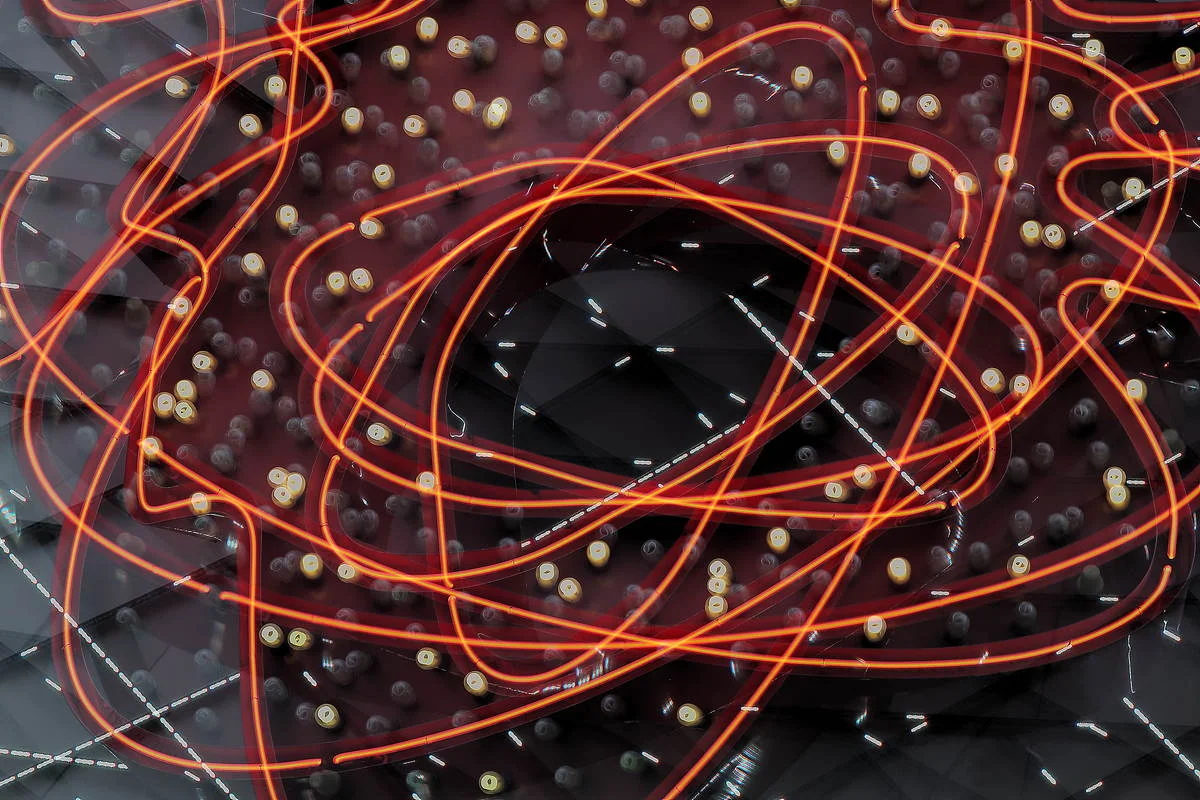
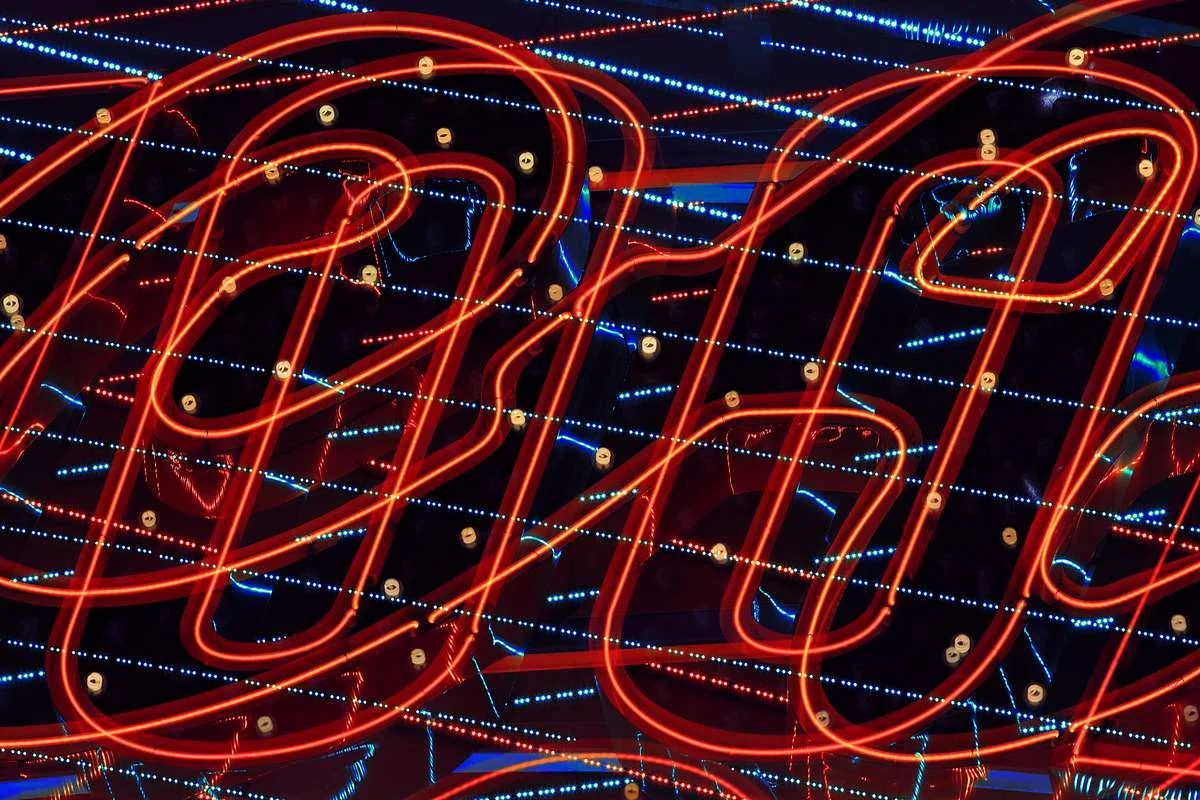
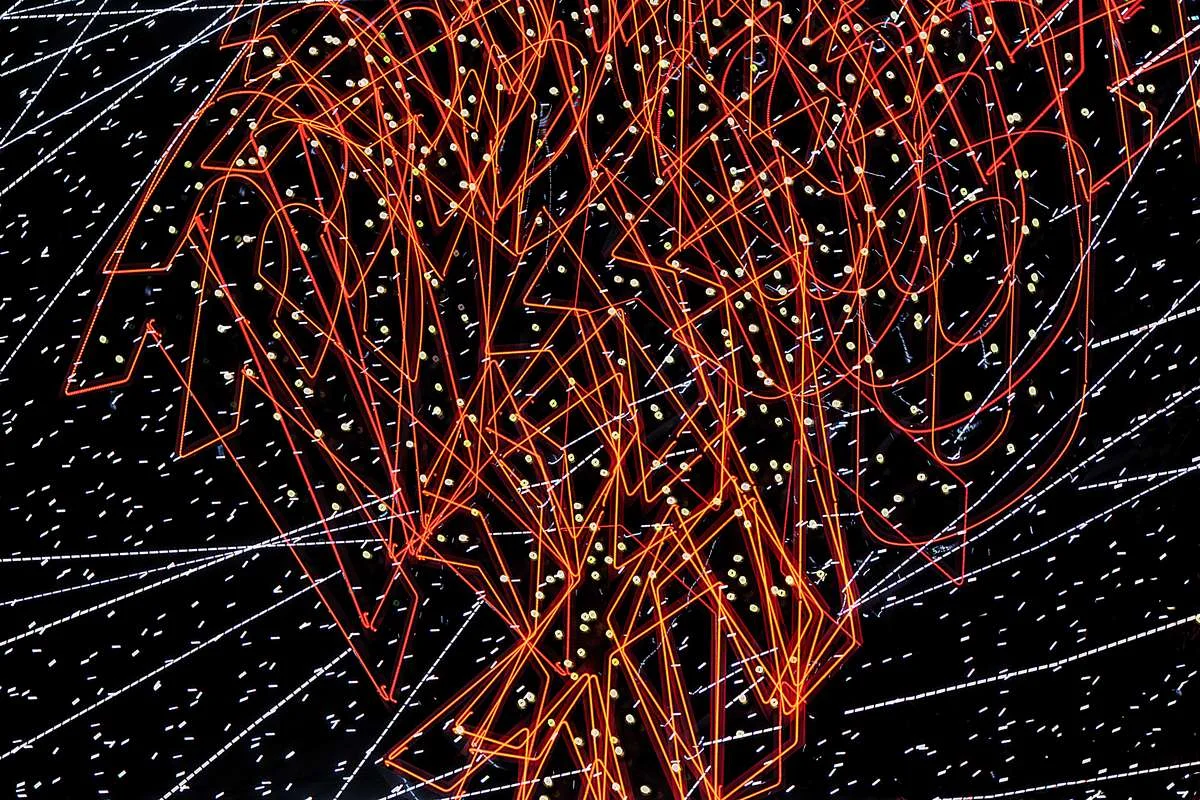


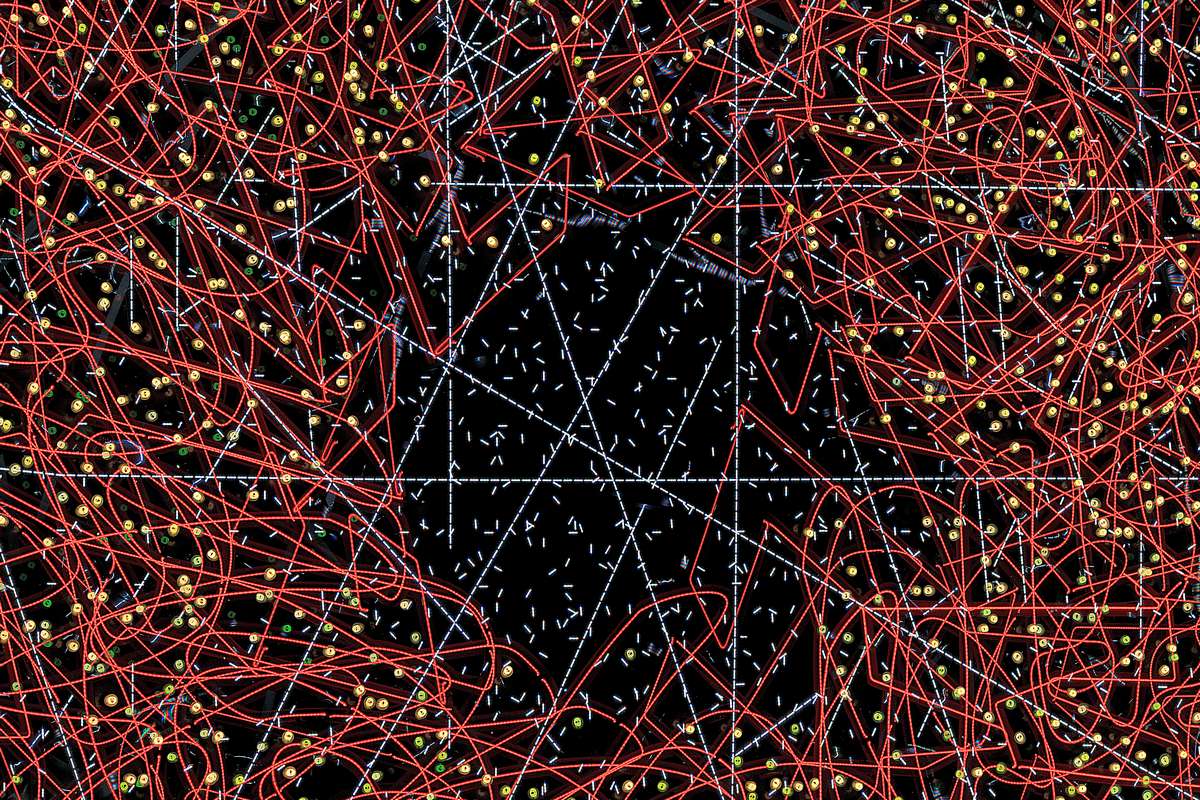


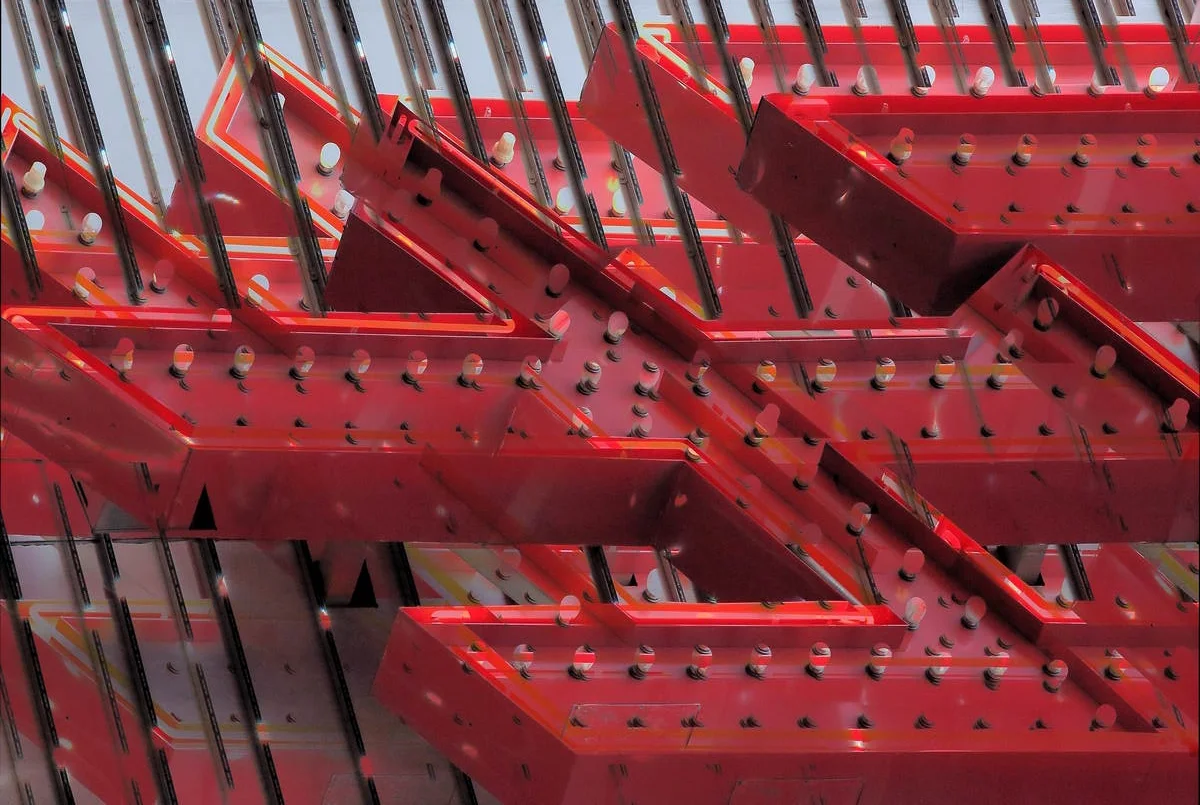
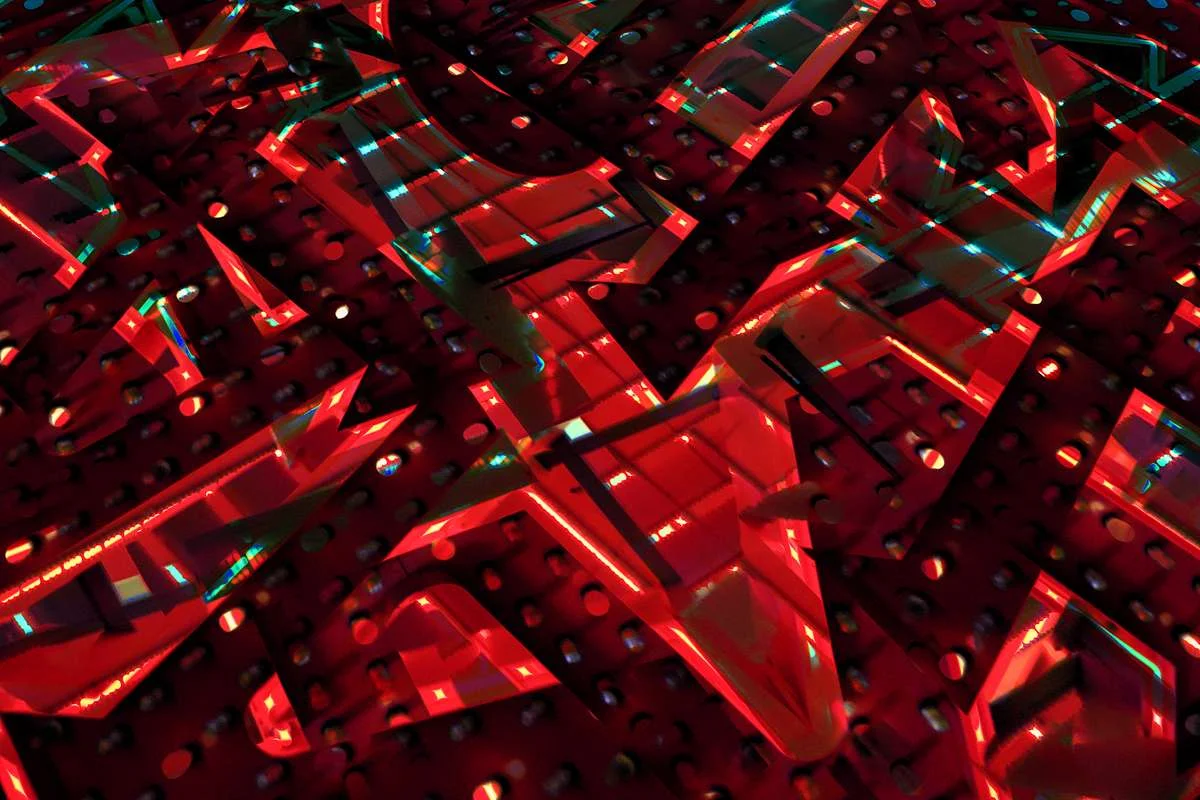
"One Scene, Many Seens." The comma effectively means but. That matters here!